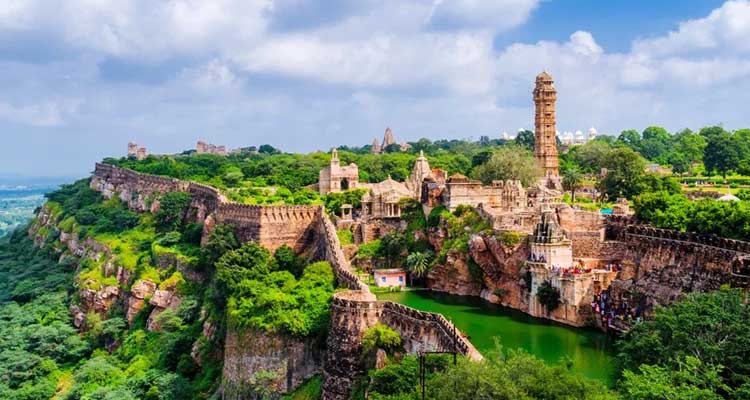Exploring the Pride of Rajasthan
Chittorgarh, nestled in the heart of Rajasthan, is a city that resonates with tales of valor, romance, and sacrifice. Once the capital of the mighty Mewar kingdom, it now stands as a majestic symbol of Rajput pride and heritage. The city’s grandeur lies in its monumental architecture, rich history, and cultural legacy. Here’s a comprehensive guide to the top attractions of Chittorgarh that every traveler must experience.
1. Chittorgarh Fort: A Testament to Rajput Bravery
The crown jewel of the city, Places to visit at Chittorgarh Fort is one of the largest forts in India and a UNESCO World Heritage Site. Spread across 700 acres and perched atop a 180-meter-high hill, the fort is an architectural marvel. Built in the 7th century, it has witnessed several heroic sieges, including the legendary jauhar (mass self-immolation) led by Rani Padmini.
Highlights within the fort:
-
Vijay Stambh (Tower of Victory): Built by Rana Kumbha to commemorate his victory over Mahmud Khilji.
-
Kirti Stambh (Tower of Fame): A Jain tower adorned with sculptures, celebrating Jain scholar Adinath.
-
Padmini Palace: A place steeped in legend, offering stunning views and a story that echoes with sacrifice.
-
Rana Kumbha Palace: The royal residence where tales of heroism come alive.
2. Meera Temple: The Shrine of Devotion
This beautiful temple within the Chittorgarh Fort complex is dedicated to Meera Bai, a devout follower of Lord Krishna and a celebrated saint-poetess. The temple is known for its intricate carvings and serene ambiance. It reflects her undying love and spiritual devotion, making it a significant pilgrimage site for Krishna devotees.
3. Kalika Mata Temple: Sacred and Powerful
Originally built in the 8th century and dedicated to the Sun God, this temple was later rededicated to Goddess Kali. It is one of the oldest and most revered temples in the fort. Devotees flock here for blessings and to witness the divine energy of the goddess.
4. Rani Padmini Palace: A Tale of Beauty and Courage
Situated on the southern end of the Chittorgarh Fort, Rani Padmini's Palace is surrounded by a lotus pool and offers a glimpse into royal Rajput architecture. The palace is associated with the story of Alauddin Khilji’s infatuation with Rani Padmini, leading to the historic siege of Chittorgarh.
5. Gaumukh Reservoir: A Sacred Water Source
The Gaumukh Kund is a natural water reservoir located within the fort. The name means "cow’s mouth," as water flows continuously from a rock shaped like a cow's head. This holy site is significant for its spiritual value and serves as a tranquil retreat for visitors.
6. Bassi Wildlife Sanctuary: A Nature Lover’s Paradise
Located about 5 km from Chittorgarh, Bassi Wildlife Sanctuary offers a refreshing break from the historical sites. Spread across 15,000 hectares, it is home to panthers, wild boars, antelope, and a rich variety of bird species. Nature lovers and photographers will find this sanctuary a rewarding experience.
7. Sita Mata Wildlife Sanctuary: Myth and Nature Combined
Around 100 km from Chittorgarh lies the Sita Mata Sanctuary, known for its dense forest cover and rich biodiversity. It is believed to be the place where Goddess Sita resided during her exile. The sanctuary is also famous for flying squirrels and the rare white-bellied drongo.
8. Sanwariyaji Temple: The Black Krishna
Located about 40 km from the city, the Sanwariyaji Temple is one of the most revered Krishna temples in Rajasthan. Devotees believe that Lord Krishna grants the wishes of his true followers here. The temple’s black idol of Krishna draws thousands of pilgrims each year.
9. Fateh Prakash Palace Museum: A Glimpse of the Royal Past
This palace, named after Maharana Fateh Singh, now functions as a museum that showcases rare artifacts, weapons, sculptures, and historical paintings. It offers insight into the opulence and regal lifestyle of Mewar’s rulers.
10. Jaimal and Patta Palaces: Honor and Martyrdom
Dedicated to the brave generals Jaimal and Patta, who defended Chittorgarh during the siege by Akbar, these palaces commemorate their valor. Statues and narratives around these sites inspire visitors with stories of undying courage.
Why Visit Chittorgarh?
Chittorgarh is more than just a historical destination—it’s a journey through centuries of honor, love, and resilience. Whether you're a history buff, spiritual seeker, architecture lover, or nature enthusiast, Chittorgarh has something to captivate your heart.
Travel Tips:
-
Best time to visit: October to March for pleasant weather.
-
Local cuisine: Try Dal Baati Churma, Gatte ki Sabzi, and local sweets.
-
Shopping: Explore traditional Rajasthani handicrafts, leather goods, and miniature paintings in local bazaars.
-
How to reach: Nearest airport is Udaipur (approx. 90 km). Chittorgarh is well-connected by rail and road.
Conclusion
From majestic forts and sacred temples to serene reservoirs and vibrant wildlife sanctuaries, the top attractions of Chittorgarh offer a rich blend of history, spirituality, and nature. It's a city where every stone narrates a story and every monument echoes with the spirit of Rajputana valor. A visit to Chittorgarh is not just sightseeing—it’s stepping into the soul of Rajasthan.


Comments
Post a Comment